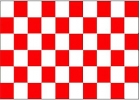



Additional Info
County Louth (Irish: Contae Lú) is a county on the east coast of Ireland, on the border with Northern Ireland. The county town is Dundalk, which is also the largest town in Louth. This is a county steeped in myth, legend and history, going back to the pre-historical days of the Táin Bó Cúailnge (Cooley Cattle Raid) Later it saw the influence of the Vikings as seen in the name of Carlingford Lough. There are a number of historic sites in the county, including religious sites at Monasterboice and Mellifont Abbey.